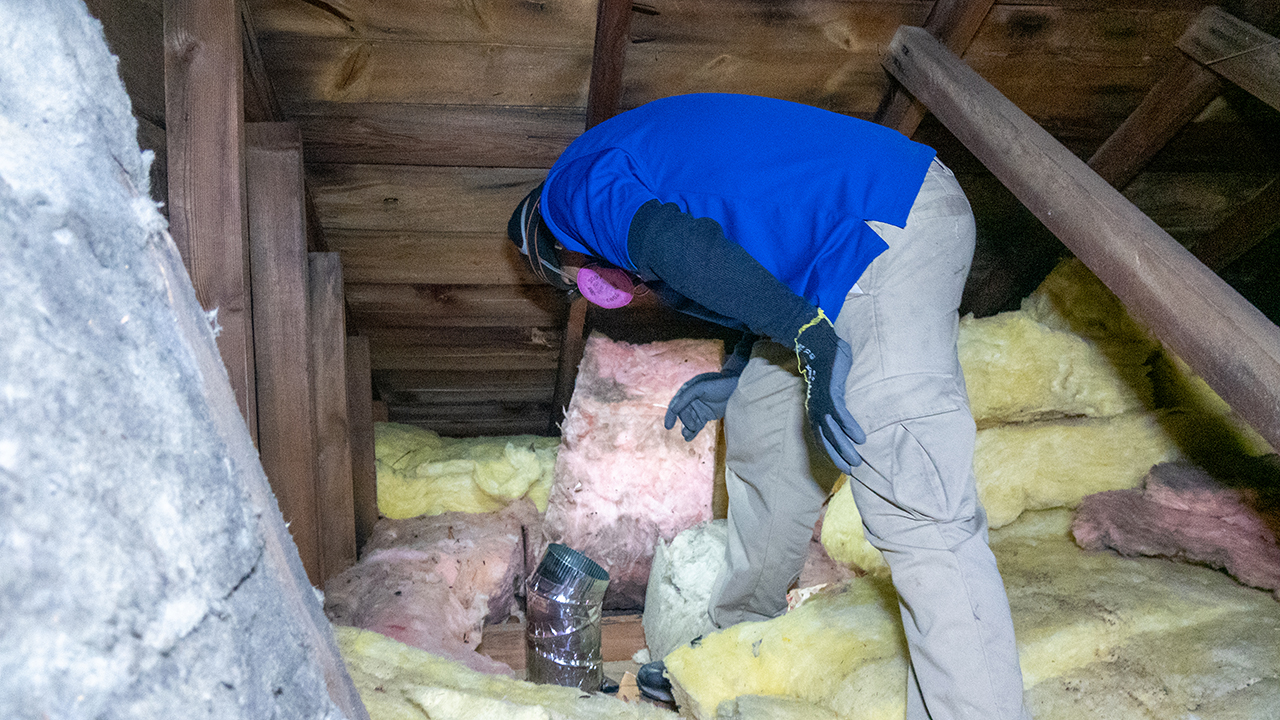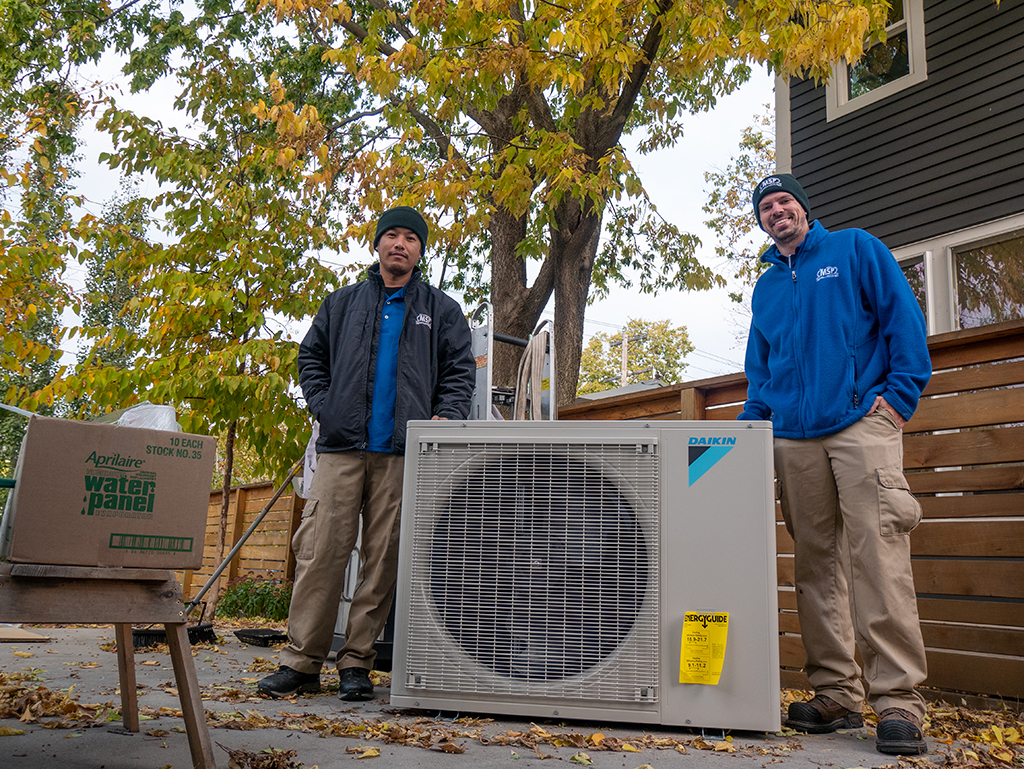
Energy efficiency and conservation are MVPs in our fight against climate change. Programs run by our utilities are powerful tools that can reduce emissions by cutting down the amount of fossil fuel we burn to heat and cool our homes, apartments, and buildings, while at the same time lowering energy bills for customers. This is why Fresh Energy is so committed to engaging in how Minnesota’s electric and gas investor-owned utilities, including Xcel Energy and CenterPoint Energy, plan and implement their energy efficiency and conservation programs.
These energy programs got their start when Minnesota established its bedrock energy efficiency policy called the Conservation Improvement Program (CIP) four decades ago. In 2021, CIP was modernized thanks to the Energy Conservation and Optimization Act and the program’s name was updated to Energy Conservation and Optimization—or ECO for short. Check out this blog post for lots of great details about the program’s origin and what it aims to accomplish.
An important requirement of ECO program planning for each utility is filing a “Triennial Plan” every three years. These plans were due earlier this summer and outline how each utility proposes to implement its energy efficiency programs for the coming three years. Fresh Energy has found that engaging in the Triennial planning process is an effective and strategic way to guide how utilities implement their energy conservation plans, but also drive crucial policy changes to advance the transition to clean heating.
On August 16, 2023, Fresh Energy filed comments at the Minnesota Department of Commerce on the Triennial Plans for CenterPoint, Xcel Energy, Otter Tail Power, Minnesota Power, Minnesota Energy Resources Corporation, Great Plains Natural Gas Co., and Greater Minnesota Gas. Our comments focused on four key points.
Efficient fuel-switching to maximize strategic electrification

“Fuel-switching” describes a utility program that enables customers to switch from one fuel type to another. An example of fuel-switching is swapping out a gas-fired furnace for an electric heat pump for heating—something customers are looking to do more and more. By analyzing utility spending, Fresh Energy has found that utilities are not fully maximizing the opportunities available through ECO for electrification via fuel-switching.
The below chart shows proposed efficient fuel-switching budgets by utility against their corresponding spending caps. As you can see, many utilities are spending only a small percentage of what they could be on fuel-switching in their ECO planning, which we see as a missed opportunity to both reduce emissions and curtail energy costs for customers. In Fresh Energy’s comments, we urged utilities to increase spending under these caps and to provide and promote more robust rebates for heat pumps and modify existing programs to also include heat pumps.
Proposed efficient fuel-switching budget by utility and corresponding percent of each utility’s efficient fuel-switching spending cap
| Investor-Owned Utility | 2024 | 2025 | 2026* | Total |
|---|---|---|---|---|
| Electric | ||||
| Xcel (electric) | $6,549,824 (57%) | $6,967,213 (60%) | $7,585,785 (66%) | $21,102,822 |
| Minnesota Power | $0 | $0 | $0 | $0 |
| Otter Tail Power | $462,400 (87%) | $462,400 (87%) | $462,400 (87%) | $1,387,200 |
| Total Electric | $7,012,224 | $7,429,613 | $8,048,185 | $22,490,022 |
| Natural Gas | ||||
| CenterPoint | $437,688 (10%) | $774,926 (18%) | $1,153,414 (27%) | $2,366,028 |
| Xcel (gas) | $882,340 (41%) | $1,666,926 (78%) | $3,107,139 (145%)* | $5,656,405 |
| MERC | $0 | $0 | $0 | $0 |
| Great Plains Natural Gas | $0 | $0 | $0 | $0 |
| Greater MN Gas | $0 | $0 | $0 | $0 |
| Total Gas | $1,320,028 | $2,441,852 | $4,260,55 | $8,022,43 |
| Total | $8,332,252 | $9,871,465 | $12,308,738 | $30,512,455 |
Maximize incentives for building efficiency
Building shell improvements (also known as weatherization) such as insulation and air sealing are an essential step to enable strategic electrification and save customers money. In fact, studies have shown that weatherizing buildings reduces energy usage and the cost of electrifying, so it makes sense that utilities should prioritize providing rebates that encourage weatherization, especially when a customer is implementing fuel-switching in combination with that work. This is a much more holistic approach.
Xcel Energy’s Triennial Plan includes a model with this more holistic approach, offering a bonus rebate of $600 for customers who install insulation and air sealing first, followed by installation of a heat pump within two years. This is a modern approach to ECO that other utilities would benefit from following. In Fresh Energy’s comments, we urged the Department of Commerce to require other utilities to replicate this model.
Evolve beyond programs that incentivize gas appliances
As Minnesota strives to reduce greenhouse gas emissions from all sectors, including the building sector, we must adopt policies that do not lock in continued and long-term reliance on fossil gas. In their proposed ECO plans, a significant portion of gas utilities’ residential rebates are proposed to be used for gas-fired appliances. This is out of step with our state’s climate goals and the current reality of emissions from our buildings sector. Our utilities are setting ambitious goals for decarbonization, and Fresh Energy believes that halting or reducing incentives for gas appliances, and increasing incentives for efficient electric appliances, is a way to begin delivering on these emissions reduction goals.
In the chart below, you can see that right now, the proposed budget for fuel-switching (i.e. electric heat pumps) within CenterPoint’s largest residential program is only 5% of CenterPoint’s proposed spending, compared to the non-fuel-switching budget for the program which consists mainly of incentives for gas-fired appliances.
Comparison of residential efficient fuel-switching (EFS) versus non-EFS proposed budgets and participants for CenterPoint’s Home Efficiency Rebates program
| 2024 | 2025 | 2026 | Total | |
|---|---|---|---|---|
| Budget | ||||
| EFS | $305,750 | $565,797 | $825,844 | $1,697,391 |
| Residential (non-EFS) | $10,612,750 | $10,930,884 | $11,454,208 | $32,997,842 |
| Percent (EFS vs. Res) | 3% | 5% | 7% | 5% |
| Participants | ||||
| EFS | 250 | 500 | 750 | 1,500 |
| Residential (non-EFS) | 31,075 | 31,315 | 31,565 | 93,955 |
| Percent (EFS vs. Res) | 1% | 2% | 2% | 2% |
In our comments, Fresh Energy has urged the Minnesota Department of Commerce to convene a stakeholder group to further discuss the role of gas-fired appliances in future ECO Triennials. Additionally, Fresh Energy urged the Department to ensure that whole home energy efficiency incentives aren’t contingent upon installation of gas-fired appliances.
Increased outreach and education for under-resourced customers
Fresh Energy sees a significant opportunity for growth in the way that utilities reach under-resourced customers about incentives offered through their respective ECO plans. In our comments, Fresh Energy urged utilities to more proactively provide outreach and education to customers about efficient fuel-switching (like heat pumps) and building shell incentives offered in their ECO plans, as well as provide education and outreach about federal and state incentives that complement and stack with these incentives, such as the Inflation Reduction Act (IRA). As the energy transition advances in Minnesota, public education is a crucial piece of the puzzle.
Comments in partnership with EEFA

In addition to the comments we just reviewed, Fresh Energy also filed additional comments as part of the Minnesota Energy Efficiency for All (MN EEFA) Coalition that focused on how utilities’ plans considered under-resourced customers, renters, and multifamily housing residents. We will be digging into these comments in the coming months, but recommendations included:
- Continuing to remove barriers for customers to participate in utilities’ energy efficiency programs, through expanded outreach and coordination with assistance programs;
- Ensuring adequate incentives for energy efficiency measures for multifamily properties, that are equitable with respect to the incentives offered for single-family properties;
- Providing more education and incentives for heat pumps within utilities’ income-qualified programs as well as for multi-family and renters;
- Preparing for the future with proactive workforce development training for program implementers and by leveraging training grants through the federal Inflation Reduction Act.
What’s next
We’ve just reviewed some, but not all, of Fresh Energy’s comments on the filed Triennial Plans. These comments are a result of hundreds of hours of staff work and detailed research into the plans submitted by each of Minnesota’s investor-owned utilities. Engaging in the triennial planning process is an important way that Fresh Energy uses policy to hold our utilities accountable to their climate commitments, our state’s emissions reduction goals, and keeping energy affordable for customers.
Fresh Energy is looking forward to continued conversation with utilities and the Minnesota Department of Commerce over the coming months as the comment process continues. We anticipate a decision on ECO plans in early November. Stay tuned for updates!
